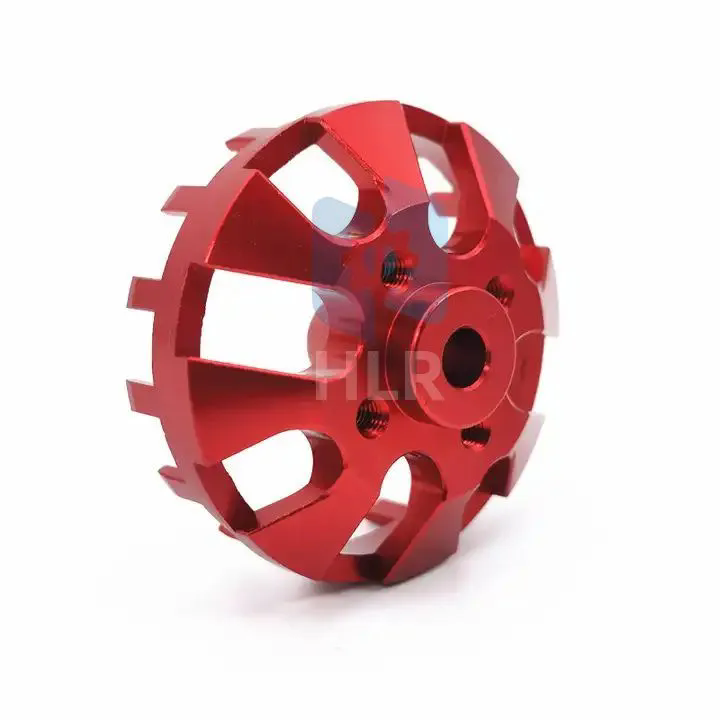CNC Milling Anodized Brackets: Precision Engineering for Modern Applications
2024-10-17
In the realm of manufacturing and engineering, precision components are crucial for the functionality and durability of various products. Among these components, CNC (Computer Numerical Control) milled anodized brackets stand out for their versatility and reliability. In this blog, we will explore the process of CNC milling, the benefits of anodizing, and the wide range of applications for anodized brackets.
Understanding CNC Milling
CNC milling is a machining process that utilizes computer-controlled tools to remove material from a workpiece, creating complex shapes and precise dimensions. The CNC milling process involves several steps:
1. Design Creation:
- Engineers create a detailed CAD (Computer-Aided Design) model of the bracket. This model includes specific dimensions, shapes, and features required for the final product.
2. Tool Path Generation:
- The CAD model is converted into a CNC program, which specifies the tool paths, cutting speeds, and feeds required to produce the bracket.
3. Material Selection:
- The right material is chosen based on the application requirements. Common materials for brackets include aluminum, steel, and various alloys, with aluminum being a popular choice due to its lightweight and corrosion-resistant properties.
4. Machining Process:
- The CNC milling machine uses various cutting tools to precisely remove material, producing the bracket according to the specifications outlined in the CNC program.
5. Finishing Touches:
- After milling, the bracket may undergo additional processes such as deburring, polishing, or surface treatment to enhance its performance and aesthetics.
The Benefits of Anodizing
Anodizing is an electrochemical process that increases the thickness of the natural oxide layer on the surface of metals, primarily aluminum. This treatment provides several advantages for CNC milled brackets:
1. Corrosion Resistance:
- Anodized surfaces are highly resistant to corrosion, making them ideal for applications in harsh environments, including marine and industrial settings.
2. Enhanced Durability:
- The anodizing process creates a hard, protective layer that improves the durability of the bracket, ensuring it withstands wear and tear over time.
3. Aesthetic Appeal:
- Anodizing can enhance the appearance of the bracket by providing a variety of color options and a uniform finish. This makes anodized brackets visually appealing for consumer products and applications where aesthetics matter.
4. Improved Adhesion:
- The anodized surface allows for better adhesion of paints, adhesives, and other coatings, enhancing the bracket's functionality and versatility.
5. Environmentally Friendly:
- Anodizing is a non-toxic process that does not produce harmful byproducts, making it an environmentally friendly option for surface treatment.
Applications of CNC Milled Anodized Brackets
CNC milled anodized brackets are utilized in various industries due to their versatility and strength. Some common applications include:
1. Aerospace Industry:
- Brackets are essential components in aircraft structures, supporting various systems and components while meeting strict weight and safety regulations.
2. Automotive Manufacturing:
- Anodized brackets are used in vehicles for mounting, securing components, and providing structural support, ensuring durability and reliability.
3. Electronics:
- In the electronics industry, brackets are used to secure components within devices, ensuring proper alignment and protection against vibrations and shocks.
4. Architectural Applications:
- Anodized brackets are used in building facades, signage, and other architectural elements, providing both functionality and aesthetic appeal.
5. Industrial Equipment:
- CNC milled brackets are commonly found in machinery and equipment, providing support for various parts and ensuring operational efficiency.
Conclusion
CNC milling anodized brackets represent a perfect blend of precision engineering and surface enhancement. Their production through CNC milling ensures high accuracy, while anodizing adds valuable properties that enhance durability, aesthetics, and corrosion resistance.
As industries continue to evolve and demand higher performance from their components, CNC milled anodized brackets will remain a crucial part of modern manufacturing processes. Whether in aerospace, automotive, electronics, or architectural applications, these brackets deliver the reliability and quality needed for today’s advanced technologies. Investing in high-quality CNC milling and anodizing processes can lead to superior products that meet the rigorous demands of various industries.



